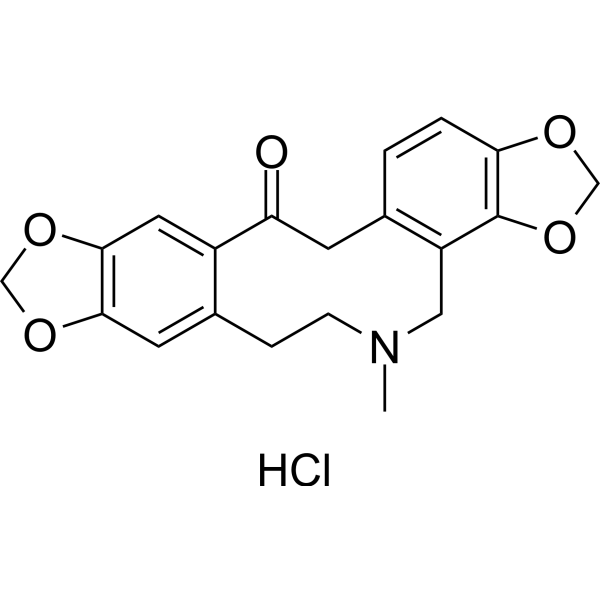
Protopine hydrochloride
CAS No. 6164-47-2
Protopine hydrochloride( —— )
Catalog No. M30941 CAS No. 6164-47-2
Protopine has antiplatelet effects,which is due to inhibition on thromboxane formation and phosphoinositides breakdown and then lead to the decrease of intracellular calcium concentration.
Purity : >98% (HPLC)
 COA
COA
 Datasheet
Datasheet
 HNMR
HNMR
 HPLC
HPLC
 MSDS
MSDS
 Handing Instructions
Handing Instructions
| Size | Price / USD | Stock | Quantity |
| 5MG | 1413 | In Stock |


|
| 50MG | Get Quote | In Stock |


|
| 100MG | Get Quote | In Stock |


|
Biological Information
-
Product NameProtopine hydrochloride
-
NoteResearch use only, not for human use.
-
Brief DescriptionProtopine has antiplatelet effects,which is due to inhibition on thromboxane formation and phosphoinositides breakdown and then lead to the decrease of intracellular calcium concentration.
-
DescriptionProtopine has antiplatelet effects,which is due to inhibition on thromboxane formation and phosphoinositides breakdown and then lead to the decrease of intracellular calcium concentration.Protopine seems to inhibit the heterotypic cell adhesion between MDA-MB-231 cells, and human umbilical vein endothelial cells by changing the expression of adhesive factors.
-
In VitroWestern Blot Analysis Cell Line:HepG2, Huh7 Concentration:10, 20, 40 μM Incubation Time:24 h Result:Induced the cleavage of caspase-3 and caspase-9.Decreased Bcl-2 and Bcl-xl level.Induced the release of mitochondrial protein cytochrome c into the cytosol.
-
In VivoAnimal Model:5-hydroxy-DL-tryptophan (5-HTP)-induced mice model Dosage:5, 10, 20 mg/kg Administration:i.p.Result:Increased the number of 5-HTP-induced head twitch response (HTR).Decreased the immobility time tested in the Tail suspension test (TST).
-
Synonyms——
-
PathwayOthers
-
TargetOther Targets
-
Recptor——
-
Research Area——
-
Indication——
Chemical Information
-
CAS Number6164-47-2
-
Formula Weight389.83
-
Molecular FormulaC20H20ClNO5
-
Purity>98% (HPLC)
-
Solubility——
-
SMILES——
-
Chemical Name——
Shipping & Storage Information
-
Storage(-20℃)
-
ShippingWith Ice Pack
-
Stability≥ 2 years
Reference
molnova catalog



related products
-
Tolimidone
MLR-1023 is a chemical compound which inhibits acid secretion in animal models and also acts as a bronchodilator in histamine-challenged animals.
-
nordihydroguaiaretic...
Nordihydroguaiaretic acid (NDGA) is a phenolic antioxidant found in the leaves and twigs of the evergreen desert shrub, Larrea tridentata (Sesse and Moc. ex DC) Coville (creosote bush).
-
Nesfatin-1 (rat)
Nesfatin-1 (rat)



 Cart
Cart
 sales@molnova.com
sales@molnova.com


